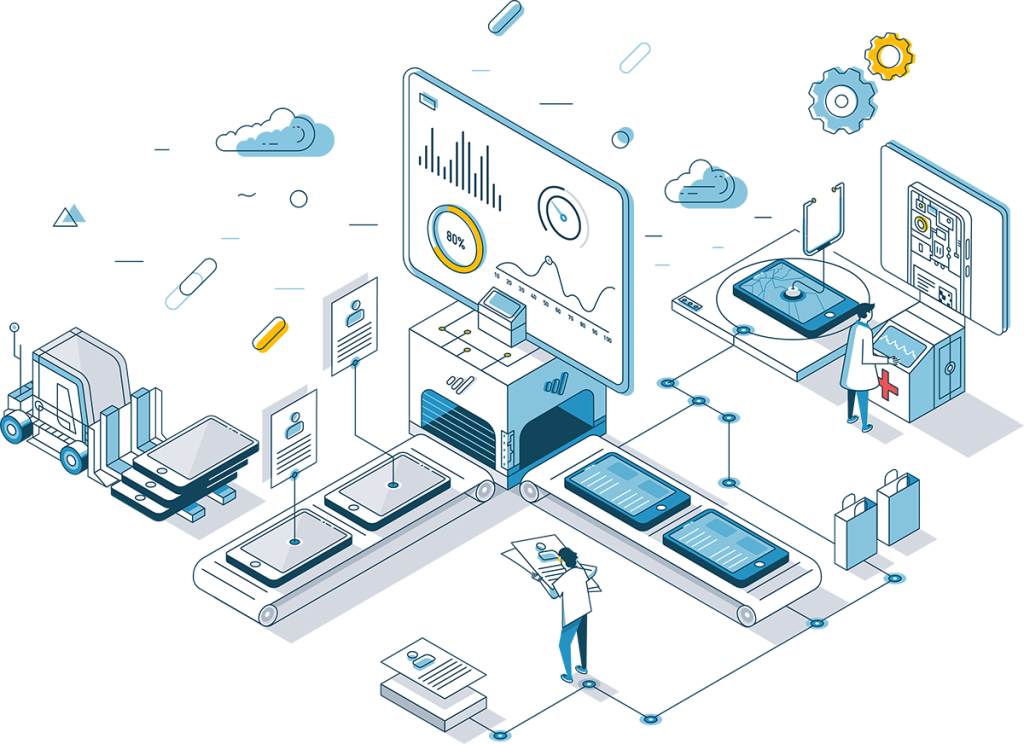The way we maintain and manage our devices in today’s workplace has dramatically changed. In response to the shift in global work practices towards blended and remote arrangements and blended arrangements, the traditional method of dispersing computers within the office was replaced by more complicated workflow, known as Device Lifecycle Management. Managed Desktop Service has emerged as a crucial component of this evolution, helping organizations streamline their processes and enhance the end-user experience, ultimately improving productivity.

Device Lifecycle Management, often referred to as DLM, encompasses the entire journey of a device from acquisition to retirement. It includes procuring maintenance, provisioning and maintenance as well as end-of life disposal. DLM in the traditional office was a simple process. The modern work environment that is remote presents additional layers and complexities.
IT managers now have to be able to manage asset management and logistics at all stages of the lifecycle of a device. The reason for this is the necessity to meet the different needs of remote and hybrid workforces. This is why it is now essential for organizations to adopt efficient solutions. Managed Desktop Service has emerged as a game-changer.
Managed desktop service Remote work enabler
Managed Desktop Services, also known as MDS is a complete management solution that streamlines the administration of devices for users. This service offers a holistic method for provisioning, managing, and supporting devices, which makes it a vital tool for IT managers. Managed Desktop Service helps organizations deal with the challenges of remote working.
Enhanced Experience for End-Users: The major objective of Managed Desktop Service, is to enhance the user experience. It solves the typical issues that remote workers experience, including delayed equipment onboarding and software upgrades. MDS enhances productivity and job satisfaction by ensuring employees have the tools and resources they require available.
Streamlining Device Provisioning Managed Desktop Service simplifies the process of providing new devices to remote employees. MDS allows organizations to efficiently provide laptops and necessary equipment for newly hired employees. This ensures that they have the equipment needed from the first day. This can eliminate the frustration of employees waiting around for their devices and experiencing delays in beginning their jobs.
Optimized Software Updates: Managed Desktop Service helps IT teams manage software updates and patches more effectively. It allows updates to be scheduled at non-disruptive hours, so that employees do not suffer interruptions in the course of their work. This reduces the possibility of interruptions for employees during video calls or meetings.
Fast Repairs and Replacements: In remote working environments, the timely repair or replacement of malfunctioning devices is crucial. Managed Desktop Service providers have often put in place robust support systems to make sure that employees are provided with prompt assistance if their devices are experiencing problems. This not only minimizes downtime but also reduces the threat of cyber-security threats stemming from the usage of unprotected or personal devices during emergencies.
Efficiency in cost: By outsourcing management of end user devices to a Managed Desktop service provider, businesses can optimize their costs. This solution eliminates the requirement for in-house staff to handle task management for devices, lowers the risk of costly interruptions caused by outdated equipment and improves the overall cost-effectiveness in managing the lifecycles of devices.
The impact on engagement of employees and turnover
Engagement and retention of employees are directly influenced by a smooth and efficient lifecycle management of devices. People who are unhappy because of issues with devices tend to become disengaged and may even consider exploring opportunities elsewhere. The effect of inefficient DLM on engagement of employees could be quite significant.
Conversely, businesses that invest in Managed Desktop Service and an efficient Device Lifecycle Management strategy can make for a more pleasant and vibrant working environment. Employees who have access to the most effective tools, who suffer less disruption and receive timely support for any issues are more likely than others to stay with their current employer. This could reduce employee turnover as well as costs of recruitment and training.
Cybersecurity The Risks of Cybersecurity: How to Reduce
In the age of remote work, security is an absolute priority for all organizations. Without proper device management employees might resort to using devices that are unsecure or personal and pose a number of security risks for the company’s data and network security.
Managed Desktop Service providers often have robust security protocols for cybersecurity in the works. They are able to ensure that every device is updated with the most recent patches and that data is protected and secured. This proactive approach to cybersecurity helps organizations mitigate risks and maintain an environment that is secure for remote work.
The final sentence of the article is:
The significance of Managed Desktop Service and Device Lifecycle Management can’t be overstated in the context of workplace environments continuing its transformation. These services are essential for companies that wish to adjust to remote and hybrid working. By making an effort to improve the user experience, streamlining the provisioning of devices and improving cybersecurity, organizations can boost productivity, decrease turnover, and create a safe and enjoyable work environment in this new work environment. Making these shifts in managing devices is not just a response to the changes in technology; it’s a step towards more effective and successful future.
